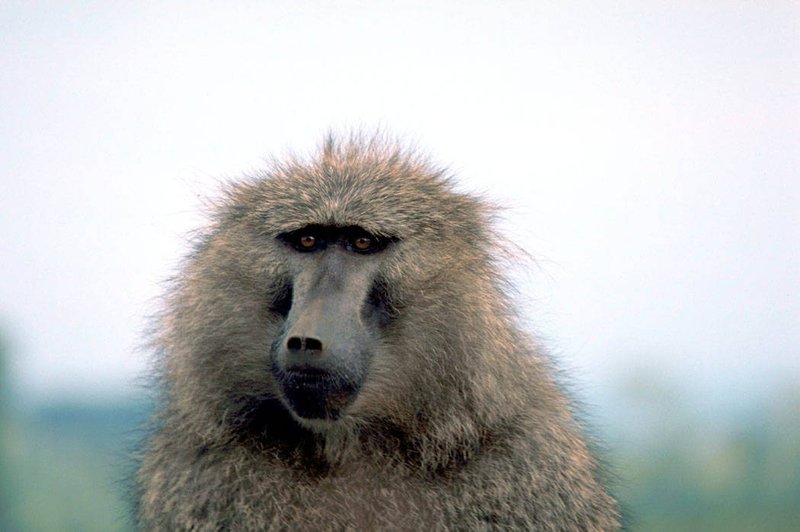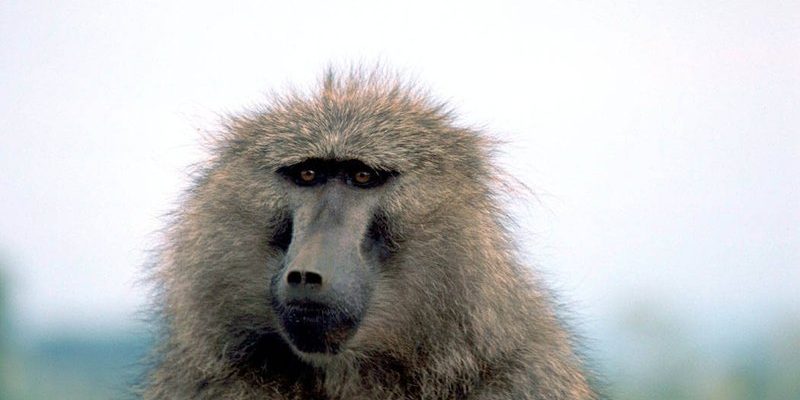
Baboons are fascinating creatures that often spark curiosity and intrigue. Imagine a troop of these lively primates, with their expressive faces and unique social structures, scampering across the savannas, or relaxing under the shade of an acacia tree. These animals are not just your average monkeys; they are highly social beings with complex relationships and behaviors that can leave you both entertained and in awe.
When we think of baboons, we might picture them as larger-than-life characters in documentaries or wildlife shows. Baboons belong to the genus Papio and are found in various habitats across Africa and parts of the Arabian Peninsula. They are known for their striking features, such as their long, dog-like snouts and colorful bottoms. But there’s so much more to these primates than meets the eye!
What Are Baboons?
Baboons are medium to large primates, and they belong to the Old World monkey family. Depending on the species, they can weigh between 50 to 100 pounds, with males typically larger than females. These animals have strong limbs, sharp canine teeth, and a social structure that revolves around complex hierarchies.
There are five species of baboons: the Olive Baboon, Yellow Baboon, Chacma Baboon, Guinea Baboon, and Hamadryas Baboon. Each species has its own distinct characteristics and behaviors, making them quite unique and adaptive to their environments. For example, the Hamadryas Baboon is known for its striking mane and matriarchal social structure, while the Olive Baboon is famous for its adaptability to a wide range of habitats.
Baboons are primarily terrestrial, meaning they spend a lot of time on the ground, although they are skilled climbers. They often form troops that can range from a few individuals to over a hundred. This social aspect is vital for their survival, as it allows them to work together to find food, defend against predators, and nurture their young.
Physical Characteristics
Baboons have some interesting physical traits that set them apart from other primates. Their most distinguishing feature is their long, dog-like snouts and pronounced facial contours. This gives them a very expressive look that can change dramatically based on their mood, whether it’s aggression, playfulness, or curiosity.
Another remarkable characteristic is their fur, which ranges from olive green to yellow-brown, depending on the species. Their tails are not prehensile like those of some monkeys but are long and typically held high as they move about. Interestingly, their thick, muscular bodies are designed for both agility and strength, making them formidable creatures in the wild.
| Feature | Details |
| Size | Primarily 50 to 100 pounds |
| Habitat | Savannas, woodlands, and hills |
| Diet | Omnivorous (fruits, seeds, insects) |
| Life Span | Approximately 20-30 years in the wild |
| Social Structure | Troops ranging from 10 to 100+ individuals |
Speaking of strength, baboons are known for their impressive physical abilities. They can run at speeds of up to 30 miles per hour. This agility is essential for escaping predators, which include lions, leopards, and even hyenas, all of which consider baboons a potential meal. Their strong limbs and ability to climb quickly can often mean the difference between life and death in the wild.
Habitat and Distribution
Baboons are adaptable animals that inhabit a variety of environments. They can be found in diverse regions, from the arid landscapes of the African savanna to the lush forests of the Arabian Peninsula. Their versatility in choosing habitats is partly why they have thrived for centuries.
Olive Baboons, for example, are known for their wide range, living in everything from wooded areas to semi-deserts. Chacma Baboons inhabit more mountainous regions, while the Hamadryas Baboon prefers rocky areas where they can find shelter. Regardless of their habitat, baboons are generally near water sources, which are essential for their survival.
In their natural habitats, baboons display remarkable adaptability. They often change their foraging patterns based on the availability of food sources and can even alter their behavior in response to human activity. In some areas, they have learned to raid crops, leading to conflicts with farmers. This adaptability showcases not only their survival instincts but also how human encroachment affects wildlife.
Diet and Feeding Habits
Baboons are omnivorous, which means they eat a variety of foods. Their diet consists mainly of fruits, seeds, leaves, and flowers, but they also consume insects, small mammals, and even bird eggs when the opportunity arises. This diverse diet helps them thrive in different environments, as they can take advantage of whatever food sources are available.
Foraging is a social activity for baboons. They often search for food in groups, which allows them to cover more ground and increases their chances of finding enough to eat. During these foraging sessions, you’ll see them using their strong limbs to dig through the earth for roots or chase after insects hiding in the grass. Their keen eyesight also plays a crucial role in spotting food from a distance.
Interestingly, baboons have a hierarchical system when it comes to feeding. Dominant males and females often eat first, followed by lower-ranking members of the troop. This social dynamic ensures that the strongest individuals get their share, but it also teaches younger baboons how to interact within their social structure. When food is scarce, this hierarchy becomes even more critical, as it can influence survival amongst the troop.
Social Structure and Behavior
Baboons have intricate social structures that can be fascinating to observe. They live in troops, which are multi-layered groups where each member has a defined rank. Within these troops, you’ll often find strong bonds between mothers and their offspring, highlighting the nurturing aspect of baboon society.
Troops are typically led by one or a few dominant males, who maintain their position through displays of strength and aggression. However, it’s not just brute force that keeps them in charge. A skilled leader also needs to be socially astute, negotiating alliances and maintaining peace within the group. If you’ve ever seen a baboon grooming another, you’re witnessing a form of social currency; grooming helps strengthen relationships and reduces tension among members.
Interestingly, baboons communicate through a variety of vocalizations and body language. From loud barks to soft grunts, each sound carries a message that can indicate alarm, reassurance, or social bonding. Their expressive faces and gestures often tell a story, revealing their thoughts and emotions. Watching a troop’s interactions can be like observing a complex play, full of drama, humor, and even tension.
Reproduction and Lifespan
Baboons typically have a gestation period of about six months, after which a single baby is born. These infants are highly dependent on their mothers during the first few months of life. They cling to their mothers’ fur, which allows them to stay close and receive the warmth and security they need. Mother baboons are incredibly protective, often grooming and nurturing their young to build strong bonds.
As the infants grow, they begin to explore their surroundings and interact with other members of the troop. This is essential, as socialization helps them learn about their place within the troop hierarchy. Young baboons will often play and engage with one another, which is crucial for their development and learning social skills.
In the wild, baboons can live for about 20 to 30 years, depending on their species and environmental conditions. However, factors such as predation, disease, and food availability can impact their lifespan. In captivity, with a controlled environment and veterinary care, they can live even longer. This highlights the difference between the challenges faced in the wild and the comforts provided in human care.
Conservation Status
While baboons are generally not considered endangered, they face various threats due to habitat loss, hunting, and human-wildlife conflict. As human populations expand into baboon territories, these animals often come into direct conflict with farmers and communities, leading to negative perceptions and efforts to control their populations.
Conservation strategies are essential for ensuring that baboons continue to thrive in their natural habitats. Protected areas and national parks play a vital role in safeguarding their populations. Conservationists work to balance human needs with wildlife protection, often promoting coexistence strategies that benefit both parties.
Public awareness and education are also critical. By sharing information about baboons’ ecological roles and their behaviors, we can foster a greater understanding of these remarkable animals. When people see baboons as part of a larger ecosystem, they are more likely to support conservation efforts and peaceful coexistence.
FAQ
What do baboons use their tails for?
Baboons have long tails that they often use for balance while running or climbing. However, their tails are not prehensile, meaning they don’t use them to grasp objects or hang from trees. Instead, their tails typically follow behind them, held high or straight as they navigate their environment.
Are baboons dangerous to humans?
Baboons can be dangerous, especially if they feel threatened or cornered. They are strong animals and can defend themselves aggressively. Most conflicts arise when baboons invade human settlements in search of food. Understanding their behavior and maintaining a safe distance is key to avoiding dangerous encounters.
Can baboons swim?
Baboons are not known for their swimming abilities, but they can cross shallow water when necessary. They prefer to stay on land and avoid deep water when possible. In their natural habitats, they are more likely to use their agility to navigate around obstacles rather than swimming through them.
How do baboons communicate?
Baboons communicate through vocalizations, body language, and facial expressions. They use different sounds to convey alarm, comfort, or social interactions. Grooming is also an essential form of communication that helps to strengthen social bonds within the troop.
What is the most common type of baboon?
The Olive Baboon is the most widespread species of baboon. They are found in various habitats throughout Africa, from savannas to forests. Their adaptability has allowed them to thrive in diverse environments, making them familiar faces in many regions.
Do baboons have any predators?
Yes, baboons face predation from various predators, including lions, leopards, and hyenas. Their size and social nature provide some protection, as they often move in groups and can warn each other of approaching threats. However, they remain cautious and aware of their surroundings to evade predators.
How long do baby baboons stay with their mothers?
Baby baboons typically stay with their mothers for a significant portion of their early life, often until they are about two to three years old. During this time, they learn essential survival skills and social behaviors necessary for thriving within the troop.
Are baboons considered intelligent animals?
Baboons are indeed considered intelligent animals. They exhibit problem-solving skills, can adapt to new situations, and have complex social structures. Their ability to communicate and form social bonds reflects their high intelligence, making them fascinating subjects for research and observation.
What role do baboons play in their ecosystem?
Baboons play a crucial role in their ecosystems as both prey and foragers. By consuming various plants, they help with seed dispersal, promoting vegetation growth. Their presence also supports the food chain; as prey for larger predators, they maintain the balance within their habitats.
How do baboons handle conflict within their troops?
Baboons handle conflict through social negotiations and displays of dominance. When disputes arise, they may engage in vocalizations or physical displays to assert their rank. Grooming relationships can also help to ease tensions and foster social harmony within the troop.

